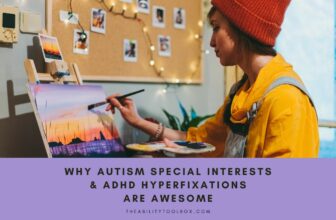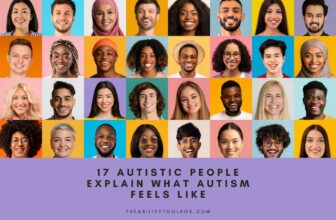
Traveling on public transport to unfamiliar places can be intimidating for a person with autism. New situations, particularly those which involve a lot of sensory stimulation, are often overwhelming and can cause high levels of anxiety. This means that train travel seems out of the question for many people living with autism in the UK.
In conjunction with the National Autism Society, Network Rail recently published an autism-friendly guide to train travel to provide insight into what to expect from a railway journey. Creating familiarity with the journey ahead of time is a key step in how to prepare a person with autism for train travel. Here are the essential things to cover before they set off for their trip.
Explain the process
First off, simply take time to explain the process. What should they expect from the journey, and how does traveling on the train work?
This should include discussion around the other people who will be traveling. Mention that there will be lots of other people on the train, getting on and off at different stops. You can go into detail about aspects such as seat reservation, covering how to find your coach and seat, and explaining that sometimes you will need to ask people to move if they are sitting in the wrong place.
You should also discuss the particular journey, going through the stops one by one and highlighting where they will be getting on and off. Being specific about the timings, including the length of the journey, will be reassuring as well. It is also essential to warn against last-minute changes such as delays that are all too common disrupters to train travel, so that this is less of a shock if it occurs on the day.
Describe the station
As well as going through the process of taking a train, it is also advisable to describe the station in detail. Major UK rail hubs such as London King’s Cross Station will be particularly overwhelming due to the volume of people, but knowing what to expect in advance will help to reduce anxiety.
You can describe all sensory stimuli that are found at train stations. This could include visuals such as toilet signs, platform displays, and examples of staff uniforms like lanyards or the color of their jackets. Your description should also cover sounds such as announcements about safety measures or last-minute platform changes.
Plan the journey
It is also important to plan the journey. The time of day and day of the week can make a huge difference to the experience, as will taking the right things with you on the day of travel.
Make sure to allow plenty of time for the journey, arriving well in advance of the train departure. Traveling in an off-peak period will be much more gentle than navigating the post-work rush hour, so be careful with the journey time as well. You should also decide whether the journey will be independent or accompanied and plan accordingly.
In terms of packing, there are several items that might be useful. Possessions that provide comfort or distraction such as sensory toys and noise-canceling headphones are a must, alongside the usual necessary items like refreshments and warm clothes. You may also wish to investigate invisible disability indicators that will encourage staff and fellow passengers to be mindful and helpful during the journey.
If any pre-journey anxiety remains, you cannot go wrong with doing an accompanied test run. This is a reassuring and less intimidating way to experience train travel for the first time and instill confidence for doing an unaccompanied journey further down the line. After all, practice makes perfect!
You may also want to check out our sensory-friendly train travel guide.
More Autism & Neurodiversity Resources in The Ability Toolbox
- Sensory-Boosting Therapeutic Gifts for Kids with Autism
- Sensory-Friendly Bathroom Design Guide
- Navigating Self-Diagnosis Conversations with Your Doctor
- How to Design a Sensory Garden
- Accepting My Neurodiversity Has Helped Me Better Understand My Autistic Teen
Follow me down the rabbit hole!
I'm Alice and I live with a dizzying assortment of invisible disabilities, including ADHD and fibromyalgia. I write to raise awareness and end the stigma surrounding mental and chronic illnesses of all kinds.











